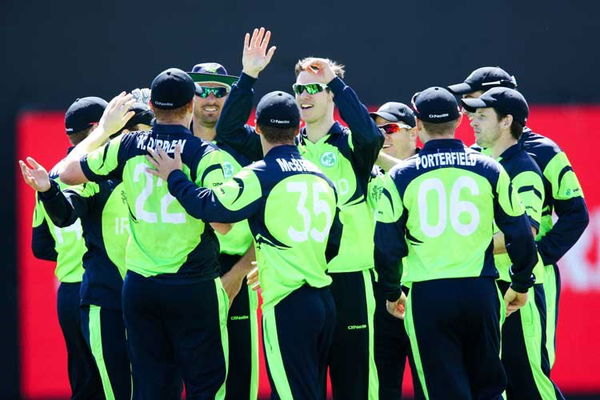

Irish cricket has come a long way from the group of amateur players which shocked Pakistan in 2007 world cup.They have always lived under the shadow of their neighbors England , who were the creators of the sport. However, the Irish have benefited a lot from English domestic cricket.Now they have full time professional cricketers who play for various county clubs in England. Since 2007, they have managed to upset their rivals England in the 2011 world cup and very recently defeated West Indies in their first match of the 2015 world cup. Now with three wins under their belt, they are on course to qualify for the Quarter Finals for the first time.

ADVERTISEMENT
Article continues below this ad
We give you a brief history of how the game was established and developed into one of the major sports of the country.
The game was introduced to the Garrison towns of Kilkenny and Ballinasloe in the early 1800’s. The spread began in the 1830’s and many clubs, still in existence today, were founded in the next 30 years.By the mid-1850’s the game had expanded to such an extent that it was the largest and most popular sport in the country, irrespective of class or creed. In fact, its success was evident from the fact that the first team to represent Ireland beat their English counterparts in 1855, by a whooping margin of 107 runs.
But after the mid 1800s the game went into a decline because of two reasons . The first one being the outbreak of land wars when the Landlords and Tenants were alienated. The second was a ban placed on the playing of “foreign” games by the Gaelic Athletic Association (GAA) who were the guardians of the native Irish games of Hurling and Gaelic Football.If someone played the extremely popular Gaelic sports he could not take part in the “foreign” games. If he did he would be banned from both.
Unfortunately, this ban was not lifted until 1970.
Proper competitive national fixtures began for the Irish in 1980 when they participated in the English Gillette Cup, but it was a long and painful learning journey towards consistency and credibility, as it took 24 years to register their first victory in the competition, and had to face three major disappointments in World Cup qualification between 1994 and 2001. The fact that Ireland ended the 2001 World Cup qualifying campaign as 8th best among the 18 Associates , speaks volumes for what happened next.
In the following years the squad soon made enormous strides, picking up prestigious victories along the way: a 10-wicket victory over Zimbabwe in 2003; over a dominant Surrey in the C&G Trophy in 2004; and against Brian Lara’s West Indies that same year. Ireland finally achieved the much awaited qualification for a World Cup (in 2007) by finishing runners-up to Scotland in the ICC Trophy 2005.

2007 will be always regarded as the year in which Irish Cricket made its biggest breakthrough. Wins in the 2007 World Cup against Pakistan and Bangladesh, and a tie against Zimbabwe on the biggest stage of world cricket are unprecedented for an Associate Member country. These achievements have brought Irish Cricket to world attention and, perhaps more importantly, to a new prominence among the Irish public.
By the end of the event, Ireland was ranked 10th in the world, the first time ever an Associate member outranked a Test-playing country. That same year, Ireland won the ICC Intercontinental Cup Trophy (the 4-day competition for the top Associates) for the second time in a row, confirming them as the top country beneath Test level in both forms of the game.
Ireland won the Division One of the European Championships in July 2009. In the same year Ireland also qualified for the world T20 in which they progressed to the super 8 once again, this time beating Bangladesh Next year, they qualified for another world T20 but were eliminated in the group stage itself.

ADVERTISEMENT
Article continues below this ad
Being the best team among the associates , it was expected that the men in Green would qualify for the 2011 world cup as well and they did it quite comfortably in the end.Though Ireland did not progress beyond the first round, they secured a historic victory against England. Ireland beat England by 3 wickets on 2 March 2011 with Kevin O’Brien hitting the fastest World Cup century off only 50 balls. It was the highest successful run chase (329 in 49.1 overs) in World Cup history.

ADVERTISEMENT
Article continues below this ad
The Irish are no longer considered to be minnows in any major tournament and big teams from all around the globe take them very seriously.This year, the Irish fans have a lot of expectations from their team. They have a decent , well balanced squad with many experienced players and with an excellent start to the tournament they are expected to make the quarter finals.
ADVERTISEMENT
ADVERTISEMENT
ADVERTISEMENT
ADVERTISEMENT


